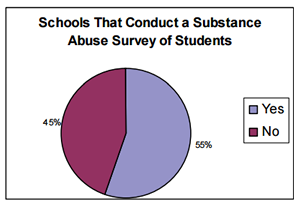Reviewing High School Initiatives
Evaluation services and resources are an integral foundation of GMU’s CAPH. Professionals provide expertise on needs assessment and evaluation strategies with campus, community, state and national organizations. A range of quantitative and qualitative approaches can be used to gain insight and document results. Just as with community initiatives, high school efforts can be reviewed through use of the Step-by-Step guide, as well as with the “menu” of strategies and measures prepared to address underage drinking.

Teen Drinking Cultures Study
The Teen Drinking Cultures in America national study included multiple methodologies in its development. These include national telephone polling, teen and parent focus groups, expert and key informant interviews. For each of these, the findings and specific questions used are prepared in separate, detailed reports. In addition, materials used for site coordinators arranging for local focus groups and interviews are provided. See literature review and full report.

Secondary School Survey on Substance Abuse
A statewide survey of public secondary schools was conducted to assess policies and activities related to alcohol, drugs and tobacco. School leadership, policies, enforcement, curriculum, assessment, public awareness events and activities are summarized. Recommendations and selected resources are provided.
Results
Evaluation on Underage Drinking
This compilation of resources includes a menu of activities and measures organized around clusters of community, law enforcement, and youth; for each objecctive, potential activities and measures are identified. This also includes instrumentation useful for each of these efforts.
Evaluation
Step-By-Step Evaluation
This resource provides a brief overview of evaluation considerations. With a visual chart and 14 steps, evaluation is organized within the context of planning for evaluation, designing the evaluation, and reviewing and using the results. For each step, "why" and "how" insights are offered, followed by tips and a planning worksheet.

